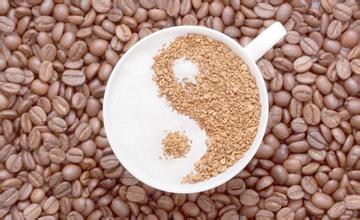Introduction to the characteristics and taste of coffee flavor varieties in Manor Ireta, Panama
The Panamanian isthmus used to be Chibucha, Caribbean and other Indian departments.
panama canal
panama canal
Settlement.
In 1501, Panama was colonized by Spain and belonged to the Governor of New Granada. [5]
In 1821, Panama became independent and became part of the Greater Republic of Columbia. [5]
In 1830, after the disintegration of the Republic of Great Columbia, it became a province of the Republic of New Granada (later known as Colombia). [6]
In 1903, after defeating Britain and France, the United States signed a treaty with the Colombian government to build and lease canals, which the Colombian Congress refused to ratify. [5]
On November 3, 1903, American troops landed in Panama, instigating Panama to become independent from Colombia and establish the Republic of Panama. On November 18 of the same year, the United States acquired the permanent monopoly to build and operate the canal and the permanent use, occupation and control of the canal zone. And dug a canal in the bee waist area in central Panama, so that the canal area became a "state-in-state" in Panama. [5]
During World War II, the United States forcibly leased 134 military bases in Panama in 1947.
Panama City
Panama City
And then returned some of them one after another. [6]
In September 1977, Pakistan and the United States signed the Panama Canal Treaty (also known as the Torrijos-Carter Treaty). [5]
In May 1989, in the Panamanian general election, both the ruling party and the opposition party claimed victory, so the election result was invalid. With the good offices of the Organization of American States, Rodriguez became interim president on August 31. Noriega, who opposes the US occupation, was appointed head of government on December 15. On the 20th, US troops invaded Panama. On the 21st, Ndalla, the former opposition presidential candidate sheltered by the United States, was sworn in as president at the US military base. [5]
In January 1990, Noriega surrendered to the US military and was taken to the United States to stand trial.
On October 4, 1994, the Pakistani parliament adopted a draft amendment to the Constitution, which provides for the abolition of the army and the establishment of a police force.
On December 31, 1999, Panama regained the sovereignty of the canal. [5]
Elected as a member of the United Nations Human Rights Council on 28 October 2015 for a term from 2016 to 2018
Coffee was first brought to Panama by European settlers in the 19th century. In the past, Panamanian coffee did not have a good reputation, and its output was only 1 / 10 of that of its neighbor Costa Rica, but now the coffee industry's focus on boutique coffee has made Panama more and more interested in growing coffee.
Panama's geographical advantage is that it has many distinctive microclimate areas suitable for coffee cultivation, and Panama also has many persistent and professional coffee growers. This means there will be a lot of very good coffee in Panama, but these coffees are often associated with high prices.
The high price of coffee in Panama is mainly caused by the following factors:
Land price: for the people of North America, they very much want to buy a stable and beautiful land at a low price. Panama is such a place;
More farmers in Panama grow coffee for export in the name of manors to emphasize their own manors;
Panamanian labor law has higher requirements for labor employment, so the coffee industry has to pay higher wages, which has to be paid by consumers.
Esmeralda Manor
When it comes to coffee prices, we should pay great attention to a manor in Panama, and it can even be said that so far, no other single estate has had such an impact on coffee farming in Central America. This is Esmeralda Manor, which belongs to and is run by the Peterson family.
When the commodity price of coffee was relatively low, the Panamanian Fine Coffee Association organized a competition called "Best Panama": coffee beans from different parts of Panama were ranked and auctioned online. Esmeralda Manor has been growing a kind of coffee called "Geisha" for many years, and the auction has made their coffee known to more people. Then they won the first place in the competition for four consecutive years from 2004 to 2007, and then won the competition again in 2009 and 2013. It kept breaking records until it was priced at $21/lb in 2004 and then rose to $170/lb in 2010. In 2013, a small portion of the sun-treated coffee was sold for $350.25/lb. There is no doubt that this is the highest price ever sold for a single manor coffee.
Unlike some other high-priced coffee (such as cat shit, Blue Mountain), the coffee quality of this estate is really up to its price level, although high demand and market factors also play a role. This record-breaking coffee tastes unusual: bright and strong floral and citrus flavors, full of tea. All these come from the advantage of "Geisha".
This estate has led to the cultivation of "Geisha" in many coffee plantations not only in Panama but also throughout Central America. For many coffee farmers, this variety means a high price, and to a large extent, this perception is correct. Because as a manor growing "Geisha", the price of its coffee is always higher than that of other estates.

Important Notice :
前街咖啡 FrontStreet Coffee has moved to new addredd:
FrontStreet Coffee Address: 315,Donghua East Road,GuangZhou
Tel:020 38364473
- Prev

Introduction to the flavor and taste characteristics of coffee varieties in Yejia Fichel Manor
Yejia Xuefei, nearly 2,000 meters above sea level, is one of the highest coffee producing areas in the world. Here has been a wetland since ancient times, Yirga means to settle down, Cheffe means wetland, Lake Turkana, Lake Abaya, Lake Chamo bring rich water vapor here. The rift valley, represented by Misty valley, is foggy all the year round, like spring all the year round, with a gentle breeze.
- Next

Introduction to the taste of high-quality coffee beans in the coffee variety producing area of Santa Rita Manor
Colombian coffee has a silky taste. Colombian coffee is equated with high quality and good taste. It is sweet in acid, low in bitterness, rich in nutrition, with a unique sour and mellow taste, and the sour, bitter and sweet flavors of Colombian super coffee match well. Unique fragrance, after drinking, the aroma fills the whole mouth. Put the aroma in the mouth
Related
- Does Rose Summer choose Blue, Green or Red? Detailed explanation of Rose Summer Coffee plots and Classification in Panamanian Jade Manor
- What is the difference between the origin, producing area, processing plant, cooperative and manor of coffee beans?
- How fine does the espresso powder fit? how to grind the espresso?
- Sca coffee roasting degree color card coffee roasting degree 8 roasting color values what do you mean?
- The practice of lattes: how to make lattes at home
- Introduction to Indonesian Fine Coffee beans-- Java Coffee producing area of Indonesian Arabica Coffee
- How much will the flavor of light and medium roasted rose summer be expressed? What baking level is rose summer suitable for?
- Introduction to the characteristics of washing, sun-drying or wet-planing coffee commonly used in Mantenin, Indonesia
- Price characteristics of Arabica Coffee Bean Starbucks introduction to Manning Coffee Bean Taste producing area Variety Manor
- What is the authentic Yega flavor? What are the flavor characteristics of the really excellent Yejasuffi coffee beans?

